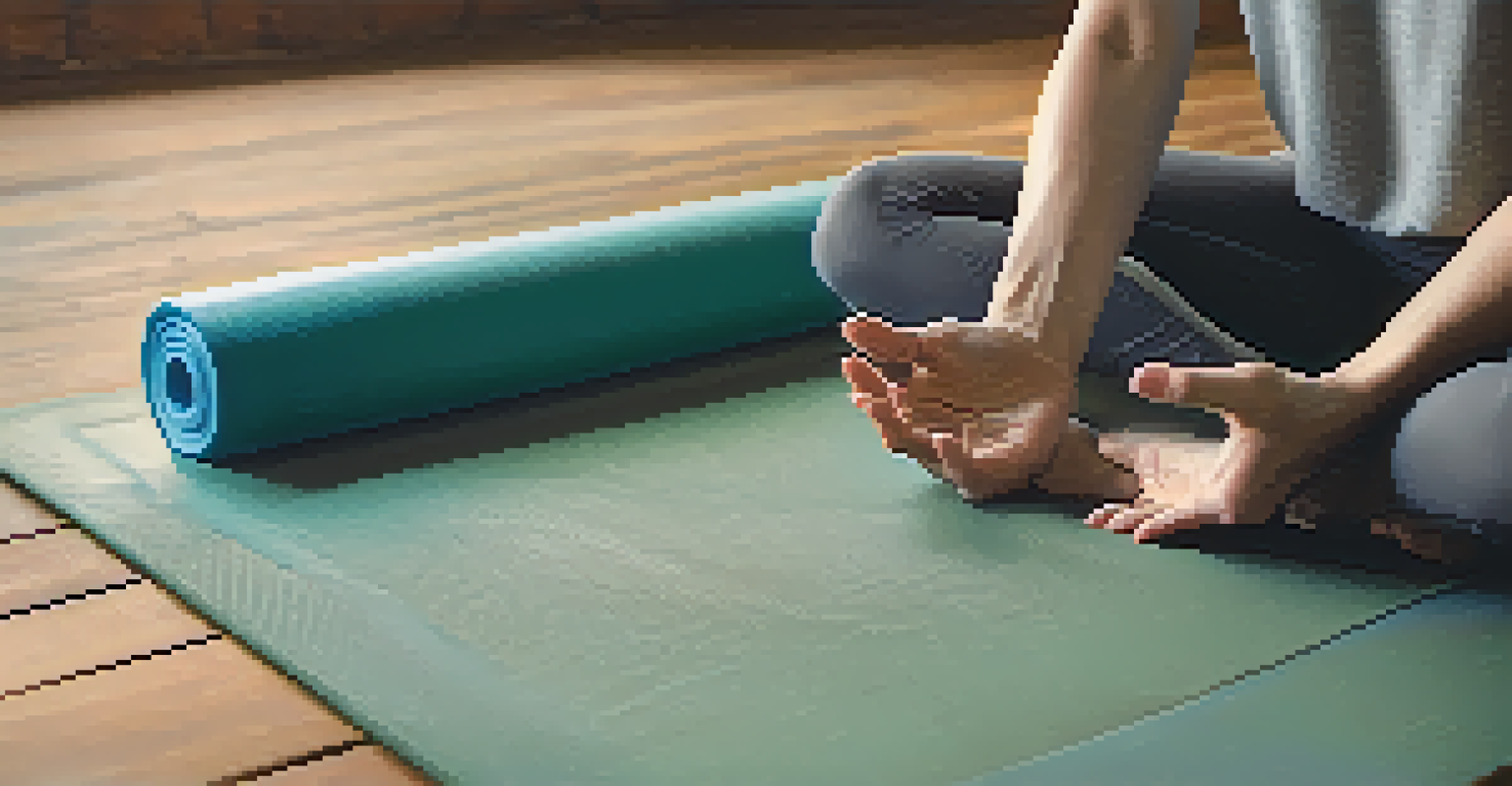How Yoga Enhances Physical Performance and Endurance

Understanding the Connection Between Yoga and Performance
Yoga is often seen as a practice for relaxation, but it offers so much more. It serves as a powerful tool for enhancing physical performance, thanks to its emphasis on strength, flexibility, and balance. By incorporating yoga into your training routine, you can improve not only your physical capabilities but also your mental focus.
Yoga is the journey of the self, through the self, to the self.
One of the key benefits of yoga is that it helps to develop core strength. A strong core is essential for almost any sport or physical activity, as it contributes to stability and control. Think of your core as the foundation of a house; if that foundation is strong, everything built on top will be more secure and resilient.
Moreover, yoga encourages mindfulness and body awareness, which can lead to better movement efficiency. Athletes who practice yoga often report improved coordination and a deeper understanding of their bodies, allowing them to perform at their best during competitions.
Flexibility: A Key Component of Physical Performance
Flexibility is crucial for athletes, and yoga is one of the most effective ways to enhance it. Through a variety of poses that stretch and lengthen muscles, yoga helps to increase your range of motion, which can prevent injuries and improve overall performance. Imagine being able to reach further or jump higher simply because your muscles are more pliable.

Increased flexibility from yoga can lead to better athletic performance in sports like running, cycling, and swimming. For instance, a more flexible hip joint allows for greater stride length in runners, contributing to faster times. This added benefit can be the difference between a personal best and a missed goal.
Yoga Enhances Physical Performance
Incorporating yoga into your training routine improves strength, flexibility, and mental focus, leading to better athletic performance.
Additionally, the focus on breathing in yoga complements flexibility. Controlled breathing techniques help to relax tight muscles, making stretches more effective. This combination of flexibility and breath control can also enhance endurance, allowing athletes to push their limits with less fatigue.
Strength Building Through Yoga Practice
While yoga is often associated with gentle stretching, many poses also build significant strength. Poses like Downward Dog, Warrior, and Plank require engagement of multiple muscle groups, enhancing both upper and lower body strength. Over time, this added strength translates into improved performance in other physical activities.
The mind is everything. What you think you become.
Think of yoga as a way to cross-train; it challenges your muscles in unique ways that traditional strength training might not. For example, holding a Warrior II pose not only develops leg strength but also engages the core and improves balance. This holistic approach can lead to a more well-rounded fitness regimen.
Furthermore, the emphasis on alignment in yoga teaches proper form and technique. This practice can help athletes avoid injuries caused by improper mechanics, ensuring that they remain strong and healthy during their training and competitions.
Breath Control: The Secret to Enhanced Endurance
In yoga, breath control is a fundamental aspect that can significantly boost endurance during physical activities. The practice of pranayama, or breath regulation, teaches you how to manage your breath efficiently, which is crucial during intense workouts or competitions. This control can make a noticeable difference in how long and how hard you can perform.
When athletes learn to control their breathing, they often find that they can sustain higher levels of exertion for longer periods. For example, runners who practice yoga may discover that they can maintain their pace without feeling as fatigued. This newfound stamina can help them achieve better times and enjoy their workouts more.
Mindfulness Boosts Athletic Focus
Practicing mindfulness through yoga enhances concentration and decision-making, crucial for succeeding in high-pressure sports situations.
Moreover, breath control helps to reduce stress and anxiety, which can be just as detrimental to performance as physical limitations. By using breath as a tool for relaxation, athletes can maintain focus and composure, particularly in high-pressure situations.
Improving Balance: A Foundation for All Sports
Balance is a critical component of physical performance, and yoga excels at enhancing it. Many yoga poses require you to engage your stabilizing muscles, which can improve coordination and prevent falls. This is especially beneficial for athletes involved in sports that demand agility and quick changes in direction.
For instance, a soccer player with exceptional balance can move fluidly across the field, evading defenders more effectively. Similarly, a gymnast relies on balance to execute intricate routines flawlessly. By practicing yoga, athletes develop the control and stability necessary for peak performance.
Additionally, improved balance allows for greater body awareness. Athletes who understand their body's positioning and movement can make quicker decisions in dynamic environments, ultimately enhancing performance across various sports.
The Role of Mindfulness in Athletic Performance
Mindfulness, a core principle in yoga, can significantly impact athletic performance. By fostering a greater connection between the mind and body, athletes can enhance their focus and mental clarity. This heightened awareness can lead to improved decision-making during competitions.
Practicing mindfulness through yoga allows athletes to stay present in the moment, reducing distractions and anxiety. For example, a basketball player who practices mindfulness may find it easier to concentrate during free throws or game-winning shots. This level of focus can be a game changer in high-stakes situations.
Balance Improves Agility in Sports
Yoga develops balance and coordination, essential for athletes to navigate dynamic environments and perform at their best.
Moreover, the mental resilience developed through yoga translates to better handling of pressure and setbacks. Athletes who practice mindfulness are often more adaptable and able to bounce back from mistakes, which is crucial for long-term success.
Creating a Balanced Training Routine with Yoga
Incorporating yoga into your training routine doesn’t mean sacrificing other workouts. Instead, it complements and balances your existing regimen. By dedicating just a couple of sessions per week to yoga, you can experience improvements in strength, flexibility, and endurance without overtraining.
Think of yoga as an essential part of your athletic toolkit. It can serve as a recovery tool after intense workouts, helping to alleviate muscle soreness and promote relaxation. This balance ensures that you remain physically and mentally prepared for your next challenge.

Ultimately, a well-rounded training program that includes yoga can lead to greater overall performance. Athletes who embrace this holistic approach often report feeling more in tune with their bodies and more equipped to tackle their goals.